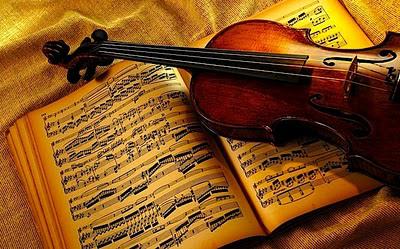Creating perfumes is definitely an art. Just as a master musician composes a symphony, so too does a perfumer create a harmonious blend combinations with ‘musical notes’ that are pleasing to the senses.
Although I truly adore natural perfumes, (I won’t use synthetics – they are an attack on my senses and is the main reason I started my whole essential oil journey), certain popular fragrances can appeal to me at times, but I still won’t buy them and choose to create my own with naturals.
Throughout history there has been much written about how compositions are created using musical characteristics to describe them. Each essential oil has a ‘note’, whether a top note that dissipates quickly (like lemon or lime), or a heart note (middle note- like rose or jasmine), or a base note that holds a blend together (like sandalwood or patchouli). Did you ever wonder how that came about?
The art of perfumery goes back centuries, and many chemists/scientists and geniuses have used musical inspirations to describe their uses and combinations. I found this great blog post from ‘perfumeconcubine’ and had to share it to give a little more insight:
Aromatic Symphony

Just as a musician harmonizes notes to create chords, a perfumer must be proficient in harmonizing scents into fragrant combinations. Thus, the creation of perfume should be pleasing to both the mind and senses. The experience should emulate the composition of an intricate piece of music. For example, a three-part fugue with the olfactory notes being the key signature, the usage of notes identifying the individual elements of the arrangement – as well as describing the perfume and how it smells as it evaporates from the skin. Therefore, it is imperative that the perfumer has vast knowledge of raw materials, and a clear understanding of how they evolve and change.

The first movement begins with what is referred to as top notes. Typically citrus odors, bright and bursting with freshness and, on occasion, is considered sharp. Although quite expressive, they seem to maintain lightness, as well as lending to the initial impression of the composition. They are also the most volatile of the notes, being the first to evaporate. The dissipation of the top notes quickly transitions us into the second movement or middle notes.
Middle notes are predominately floral aromas, and as they unfold they exhibit the true heart of the composition, adding fullness, roundness, and complexity. Middle notes, can be either heady and exotic or delicate and subdued. They emerge as the perfume warms on the skin, escorting us gracefully into the third movement or the base notes.
Base notes — originating from woods, resins, and spices — are rich, warm and exotic. They are viscous, having a consistency between solid and liquid. And they also have a dual function and are held in high esteem for their fixative qualities. That anchors the composition, completing the structural unity necessary to achieve harmony while, at the same time, adding longevity. The base notes emerge slowly, almost as if the movement is marked adagio, bringing the symphony to its entirety. Base notes are the last to surface but have the longest duration, or in musical terms sustainability. Base notes leave their clinging impression behind by embracing us for hours, thus completing the fragrance evolution.
Not every symphony will be vivacious or sparkle with brilliance. Depending on the composer, the concert may be inferior, lacking life, or absent of character, with tonality being non-existent. On the other hand, a symphony composed by a true virtuoso will be exquisite, giving an accurate exposition on his thematic idea. Every note being smooth and harmonic as they progressively transition from one phase to another, accompanying us gracefully through the fragrance evolution.
An aromatic symphony is a classical perfume, bearing semblance to a beautiful musical composition, one of consonance, as simple notes mingle and produce harmonious blends.Great book about Charles Piesse’s work:
Other great reading for natural perfumery;
MORE; natural perfumery books
